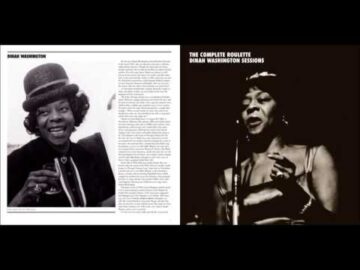Cost Variance Formula & Analysis How to Calculate Cost Variance Video & Lesson Transcript

Materials can be saved in the warehouse for next period if not used right away, and direct materials purchased is usually different from what is used. It’s not possible (or legal in most states) to buy labor and store it in a warehouse until next period. Direct labor purchased is the same as direct labor used as far as this textbook is concerned. This $11,500 has to be recorded at actual cost of $11,500 in the wages expense account. The FASB frowns on firms not recording expense accounts at actual values (as in, they can send you to prison).
NPF Letter to B.C. Premier David Eby re B.C. RCMP Recruitment, Clarity on RCMP Contract Policing, and Surrey RCMP Crime Reduction – Yahoo Finance
NPF Letter to B.C. Premier David Eby re B.C. RCMP Recruitment, Clarity on RCMP Contract Policing, and Surrey RCMP Crime Reduction.
Posted: Tue, 18 Jul 2023 07:00:00 GMT [source]
The total variances can be calculated in the last line of the top section of the template by subtracting the actual amounts from the standard amounts. The standard quantity allowed of 630,000 feet is subtracted from the actual quantity purchased and used of 600,000 feet, yielding a variance of 30,000 feet. Variances are favorable if the standard amount is more than the actual amount. When using the template format presented in this chapter, positive variances are favorable and negative variances are unfavorable. In the NoTuggins example, the total standard direct materials allowed was 630,000 feet.
Definition of Cost Variance
One reason may be that overhead variances can offer confirming evidence of direct material or direct labor variances. Second, it is more likely that responsibility for overhead costs, even after additional investigation, is spread across several managers and/or departments. That means overhead variances are often less easily actionable than other cost variances. If actual units purchased and actual units used are different, it implies a change in the number of direct materials in the warehouse.

This might seem small, but it dramatically changes how we measure costs and profits (I discuss this a little more in Sections 7.7). If variance is the difference between budgeted results and actual results, then I can restate the profit equation as follows. Again, managers want to hold people and things responsible for the costs they cause because then managers can choose to have more of whatever is profitable and less of whatever is unprofitable in future periods. Going back to the example above, let’s say you checked in on the graphic design project when 25% of the work was done.
Cost Variance Percentage
Indirect labor is labor used in the production process that is not easily and economically traced to a particular product. Examples of indirect labor include wages paid to the production supervisor or quality control team. While they are a part of the production process, it would be difficult to trace these wages to the production of a single desk. Indirect labor is included in the manufacturing overhead category, not the direct labor category. The total price per unit variance is the standard price per unit of $0.50 less the actual price paid of $0.55 equals the price variance per unit of $(0.05) U.
For this example, let’s look at a small construction project, which is an industry which can benefit greatly from tight project cost management. (iii) There may be some idle hours due to abnormal situation like strike, lockout, shortage of power which were not considered at the time of fixing the standard labour cost. The inventory valuation question determines which costs are considered inventory, an asset, and which costs are considered expense. Many firms build these variances into several T-accounts, each bearing the name of the variance they represent.
Deliver your projectson time and under budget
All standard cost variances are calculated using the actual production quantity as the cost driver. As mentioned previously, standard rates and quantities are established for variable manufacturing overhead. When discussing variable manufacturing overhead, price is referred to as rate, and quantity is referred to as efficiency. Any variance between the standard costs allowed and the actual costs incurred is caused by a difference in efficiency or a difference in rate. The total variance for variable manufacturing overhead is separated into the variable manufacturing overhead efficiency variance and the variable manufacturing overhead rate variance. Direct material and direct labor are considered variable manufacturing costs, since the total amount for these costs changes based on production.

This may be a result of receiving discounts, effective bargaining, or some other factor. For example, favorable prices on materials and good quantity variance indicate that the purchasing and production departments are using materials in a very efficient way. After all, all of these project-based companies are running business which need to make profits, and predictable and well formulated cost variances increase the chances that every project will turn a profit.
Video Illustration 8-2: Computing direct materials variances
It is important to remember that standards are the planned or projected amounts. Any variance between the standard amounts allowed and actual amounts incurred should be investigated. Since direct labor hours are the cost driver for variable manufacturing overhead in this example, the variance is linked to the direct labor hours worked in excess of the standard labor hours allowed. This overage in direct labor hours means that $22,500 of additional variable manufacturing overhead was incurred based on the standard amount applied per direct labor hour.
- It is important for a project manager to monitor and analyze cost variance throughout a project.
- That means overhead variances are often less easily actionable than other cost variances.
- Thus, a cost variance report should only include a few items each month, preferably with recommended actions to be taken.
These could vary due to the quantities of each ingredient purchased or the price at the time of purchase. For the labor, it was (8/9) 89% of the planned budget; thus, it was 11% under budget (100-89). For the materials, it was (18,000/20,000) 90% of the planned budget; thus it was 10% under budget. This is easy to calculate when the project is complete; but, of course, this should be tracked throughout a project to watch for when things might go off track.
Video Illustration 8-1: Standard costs for manufacturing costs
This means it should be 50% through the labor and budget, assuming the costs are spread equally throughout the project. Note that if the project requires purchasing all of the materials upfront, this would not be divided evenly and should be noted and planned for in the project plan. The plan is bookkeeping for independent contractors: a guide shoeboxed for a total of 14 hours, but at the halfway point it would be expected to be at seven hours (14/2). If the project plan notes that the materials were purchased upfront, this might be reasonable. In the absence of an explanation, these high percentages should be of concern to the project manager.

At the 25% completion mark, your projected cost—the amount that you expected to have spent at this point—should be $15,000, or 25% of your total budget. The key is spotting them and making adjustments to stay on the right path. One of the best ways to avoid cost overrun is by calculating cost variance. The CV
itself indicates whether the cost incurred for work performed in one or more
periods of a project meets, exceeds or falls below the budgeted amount. Use this
calculator if you wish to calculate the period-by-period or cumulative cost
variance of your project.
What Is Variance at
A TCPI is an index that shows you how resources must be used for the rest of a project in order to come in under or on budget. It also contains the
definitions of the different CV types, their formulas as well as an example and
a cost variance calculator. This portion of the project was already $1,470 over the planned budget for labor. At Finance Strategists, we partner with financial experts to ensure the accuracy of our financial content. Cost variances allow managers to identify problem areas and control costs for the upcoming months of business. Another important question is to determine whether the causes of the variance are beyond the control of managers (e.g., due to unexpected changes such as price increases, rapid growth in order volumes, and so on).
- As long as you remember that budgeted quantities refer to the flexible budget, direct labor variances can be calculated in a way that is very similar to revenue variances.
- If a project is on track at the halfway point but off track at the three-quarter mark, you not only know that something went wrong—you also know when it went wrong.
- A static budget (column F) and a flexible budget (column G) are both shown below.
- For some companies, their cost variance calculator is still excel or generic spreadsheets.
- Using cost variance, you can track actual costs against budgeted costs in real-time so that you can make changes and course correct if and when the budget goes off track.
Cost variance is essential since it enables the Program Manager and others to monitor a project’s financial development. It indicates how successful they are at monitoring and minimizing potential hazards, as well as how well they evaluate project-related data. They may also assess your cost variance to draw comparisons between the budget and actual costs throughout a project your team completes, allowing them to adjust their budgeting strategies to fit the objectives better. Another advantageous feature is using historical data from previous projects to develop a more accurate budget prediction.
Since she paid less for the material and labor, Patty assumed that at the end of the period overall manufacturing costs would be lower than projected. However, manufacturing costs were higher than expected at the end of the period. Accordingly, Patty decided to perform a standard cost variance analysis on the variable manufacturing costs. A template to compute the standard cost variances related to direct material, direct labor, and variable manufacturing overhead is presented in Exhibit 8-11.
Job-order costing and process costing, in contrast, are answers to the “Cost Accumulation Method” question. That is, job-order costing accumulates costs at the job-level and process costing accumulates costs at the process-level (or department-level). In a modern accounting system that means the computer effectively maintains separate WIP accounts for each job or for each process. Without knowing a sub-type of overhead cost that cost too much or the quality of the estimation that lead to the PDVOH rate in the first place, it is relatively hard to use this figure for evaluative purposes.